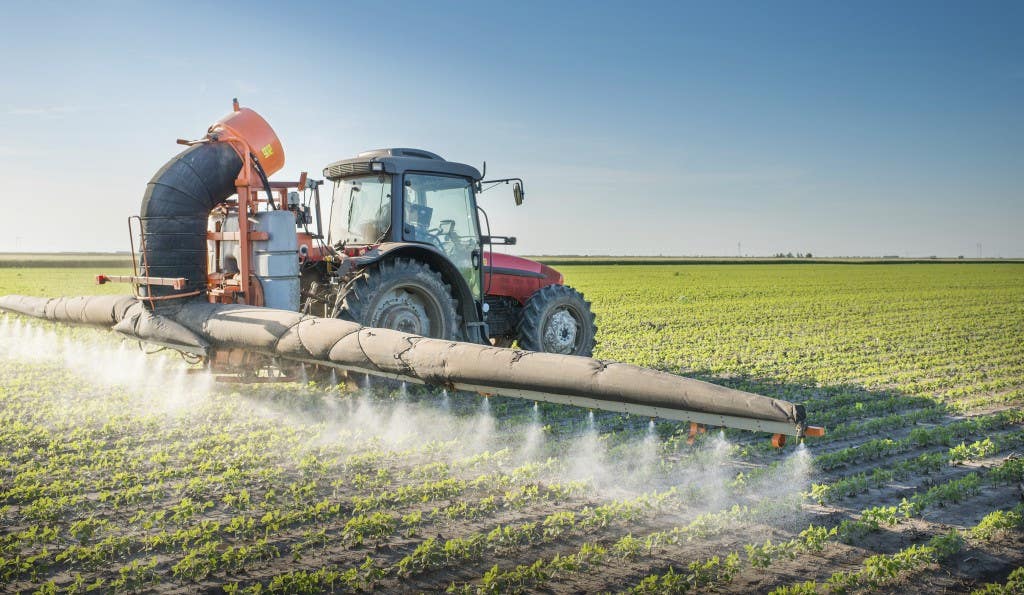First global study spotlights pesticides impact on the environment
Comprehensive research offers new insights into these elusive trajectories, painting a troubling picture of global pesticide distribution

[July 14, 2023: Staff Writer, The Brighter Side of News]
Every year, about three million tonnes of agricultural pesticides are dispensed worldwide. (CREDIT: Creative Commons)
Every year, about three million tonnes of agricultural pesticides are dispensed worldwide. Yet, the paths these chemicals traverse after their initial application remain largely undetermined. Today, a comprehensive study published in the scientific journal Nature offers new insights into these elusive trajectories, painting a troubling picture of global pesticide distribution and their environmental implications.
The study, led by Associate Professor Federico Maggi of the University of Sydney’s School of Civil Engineering, examined the geographic dispersion of 92 of the most frequently used agricultural pesticides. The findings were startling: approximately 70,000 tonnes of potentially harmful chemicals seep into aquifers annually, jeopardizing ecosystems and freshwater resources.
Professor Maggi clarified, “Our study has revealed that pesticides wander far from their original source. In many cases, these chemicals end up a long way downstream and often, though in much smaller amounts, all the way to the ocean.” This far-reaching mobility of pesticides underlines a significant, yet underexplored, facet of global pollution.
Analysis showed that about 80 percent of applied pesticides disintegrate into daughter molecules – or byproducts – in the soil surrounding crops. This cascade of molecules into the surrounding environment, as described by Professor Maggi, poses a persisting risk.
Related Stories
He explained, "This degradation of pesticides often occurs as a 'cascade' of molecules into the surrounding environment, which can persist in the environment for a long time and can be just as harmful as the parent molecule or applied pesticide." A clear illustration is glyphosate, a widely used herbicide. Despite being highly degradable, it transforms into a molecule known as AMPA that is both enduring and toxic.
While the study found that only a fraction of pesticides enter river systems after field application, most of the active ingredients eventually find their way to the ocean. This trajectory has severe implications on marine wildlife and coral reefs, threatening the very bedrock of marine and freshwater food chains.
Professor Maggi notes, “On paper, 0.1 percent leaching into freshwater ways might not sound like much. But it only takes a tiny amount of pesticides to have a negative impact on the environment.”
Pesticide concentration in rivers and discharge to oceans. (CREDIT: Associate Professor Federico Maggi, University of Sydney, Dr Francesco Tabiella, United Nations and Dr Fiona Tang, Monash University)
Annual figures indicated that 730 tonnes of pesticides enter rivers, with about 13,000 kilometers of rivers reaching chemical concentrations above safety limits for various aquatic plants and invertebrates. The consequences on river ecosystems, while not fully understood, are likely to be severe.
Dr. Fiona Tang, a lecturer in water engineering at Monash University and paper co-author, adds, “Just because we don’t see pesticide residues in soil and water doesn’t mean they’re not there, impacting critical systems on land, rivers, and oceans.”
Pesticide budget in the catchments and rivers. (CREDIT: Nature)
Dr. Francesco Tubiello, Senior Environmental Statistician at the United Nations’ Food and Agriculture Organisation, and another co-author of the paper, underscores the urgency of the situation. He advocates for the immediate adoption of sustainable management strategies to curb the use of harmful pesticides and establish effective monitoring systems in line with the 2030 Sustainable Development Agenda.
The researchers based their study on a broad collection of publicly accessible geospatial data. However, they caution that their estimates may be conservative, given they did not include all pesticides in their analysis. Legacy pesticides and those used in aquaculture, private residences, and public spaces were not factored into the study. This omission implies the actual exposure risk to these chemicals for ecosystems and people might be higher than reported.
Earlier, Professor Maggi co-authored another paper in Nature Ecology and Evolution, outlining strategies to diminish pesticide use. This paper emphasized the need for reliable indicators and improved monitoring. The authors argue that targets for lessening pesticide pollution should focus on minimizing risk, which includes reducing quantities and toxicity. This approach is critical given that even small amounts of highly toxic pesticides can pose grave risks to some organisms.
"It is important that national authorities disclose statistics on the use of agricultural inputs, be they fertilizers or pesticides, given the effect they have on the environment and ecosystem service,” he said.
The researchers contend that a global reduction in pesticide use is feasible without compromising food security. This objective, they believe, can be achieved with well-planned initiatives developed in consultation with food producers.
Professor Maggi further elucidated, “Globally, there is a lot of room to increase efficiencies and yield while still supporting an abundant food supply through new technology and modern crop management practices.”
The global use of pesticides and their consequential environmental impact is a multifaceted challenge. This recent study acts as a stern reminder of our obligation to adopt more sustainable and responsible agricultural practices, safeguarding our ecosystems, and the delicate balance of life they support.
Note: Materials provided above by the The Brighter Side of News. Content may be edited for style and length.
Like these kind of feel good stories? Get the Brighter Side of News' newsletter.
Joseph Shavit
Head Science News Writer | Communicating Innovation & Discovery
Based in Los Angeles, Joseph Shavit is an accomplished science journalist, head science news writer and co-founder at The Brighter Side of News, where he translates cutting-edge discoveries into compelling stories for a broad audience. With a strong background spanning science, business, product management, media leadership, and entrepreneurship, Joseph brings a unique perspective to science communication. His expertise allows him to uncover the intersection of technological advancements and market potential, shedding light on how groundbreaking research evolves into transformative products and industries.



